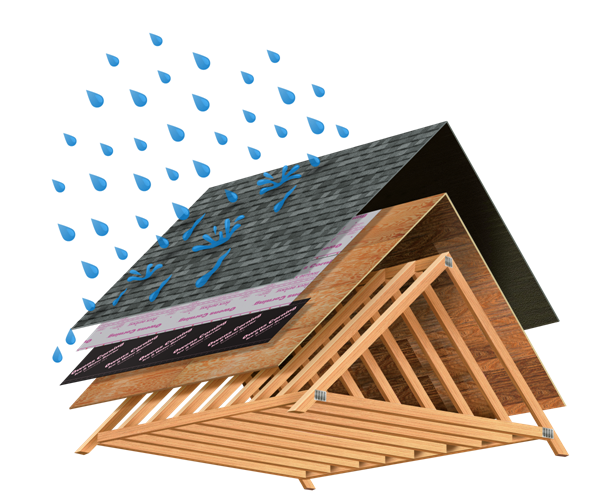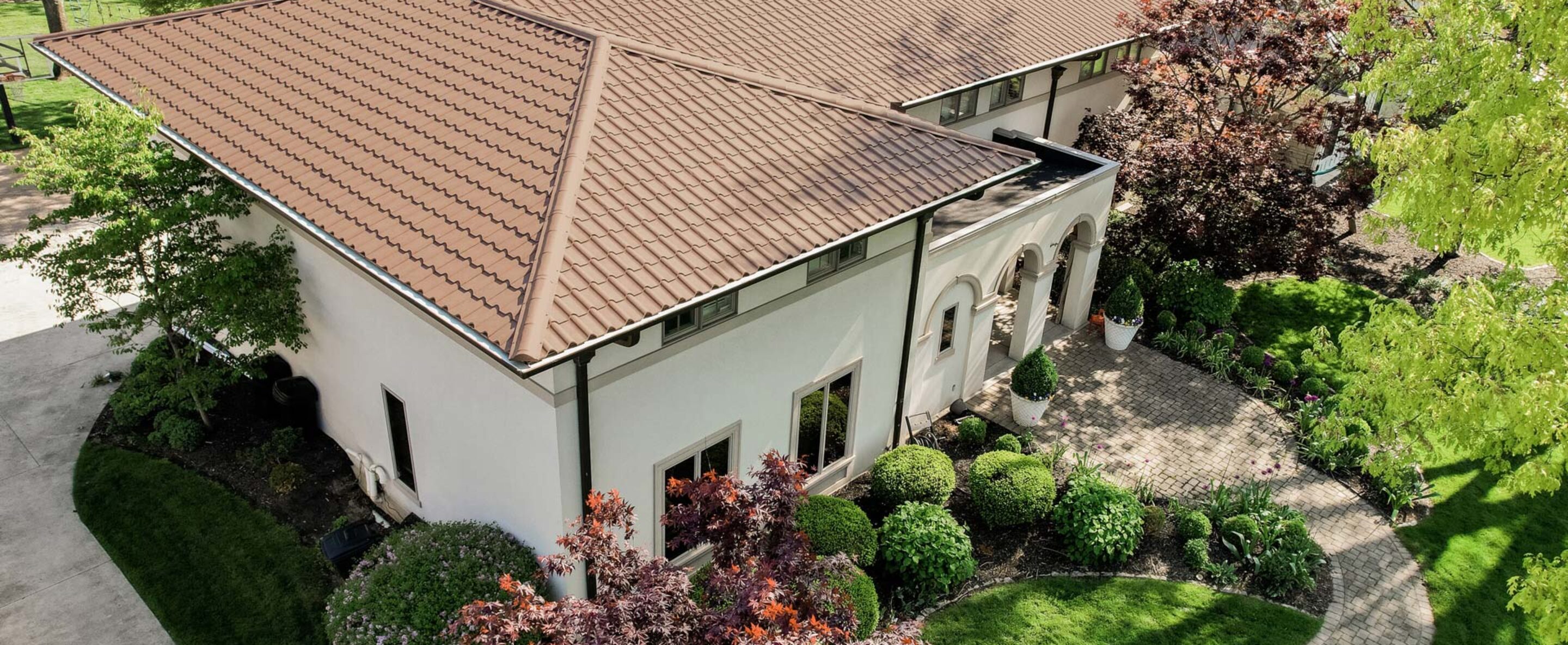A&E Roofing Contractors Queens: Top Quality Workmanship Ensured
A&E Roofing Contractors Queens: Top Quality Workmanship Ensured
Blog Article
Increase Your Home's Energy Performance With Professional Roof Solutions
Enhancing your home's energy effectiveness through expert roofing solutions entails a tactical strategy that goes beyond plain looks. The roof covering, typically an ignored element in energy preservation, plays a crucial function in keeping a comfortable indoor setting while decreasing energy costs. From insulation to ventilation, every element of your roofing system can impact your home's power usage. Think about the ramifications of roofing system shade, the benefits of appropriate maintenance, and the influence of roof products on your energy effectiveness goals. It's time to raise your understanding of exactly how skilled roof covering solutions can change your home right into an energy-efficient shelter.
Importance of Roof Insulation
Effective roof covering insulation dramatically adds to maintaining a building's energy performance by decreasing warmth loss and decreasing power usage. By developing a barrier that stops warmth from leaving throughout the cooler months and going into during the warmer months, roof covering insulation plays an essential duty in supporting interior temperature levels. This stabilization leads to a reduced dependence on heating and cooling down systems, inevitably lowering power costs and reducing the total carbon impact of the structure.
In addition, appropriate roofing insulation aids in protecting against dampness buildup within the structure's structure. By creating a safety layer that hinders the development of condensation, insulation mitigates the risk of mold growth, timber rot, and various other forms of architectural damage triggered by excess moisture. This not just protects the stability of the building yet additionally boosts interior air top quality, promoting a healthier setting for residents.
In essence, spending in premium roofing insulation is a cost-effective approach that not only enhances power effectiveness however also contributes to the long-term sustainability and convenience of a structure.
Benefits of Correct Roof Covering Maintenance
Appropriate roof covering maintenance, as an essential complement to robust roofing system insulation, plays a crucial duty in ensuring the long-term resilience and performance of a structure's roof system. Normal maintenance tasks such as assessments, repair work, and cleaning help in determining and attending to issues before they rise right into costly problems. By proactively preserving the roof covering, homeowner can expand its life expectancy, avoiding premature damage brought on by leaks, water damage, or architectural concerns.
One of the vital benefits of appropriate roof upkeep is enhanced power performance. A well-maintained roofing with undamaged seals and insulation makes sure that home heating and air conditioning systems operate more successfully, reducing power usage and energy costs. Furthermore, by maintaining the roofing system in excellent problem, homeowner can prevent the need for major fixings or premature roof replacements, conserving both time and cash over time.

Effect of Roof Covering Shade on Energy Effectiveness
The shade of a roofing system can dramatically influence its power efficiency performance. Light-colored roofs, such as light or white gray, reflect more sunshine and warmth far from the structure, decreasing the quantity of warmth absorbed into the structure. roof repair queens A&E. This reflective residential or commercial property helps in keeping reduced indoor temperature levels, specifically during warm summer season, which can cause blog decreased reliance on air conditioning systems and lower energy costs. On the various other hand, dark-colored roofs, like dark or black brown, soak up even more heat, leading to greater interior temperature levels and possibly boosting the requirement for cooling down systems.
In areas with mostly warm environments, choosing a light roof covering can add to significant power savings and improved convenience inside. Nevertheless, in cooler environments, a dark-colored roofing might help in preserving even more warm throughout the wintertime months. When selecting a roof color for your home, consider factors such as environment, power efficiency objectives, and individual preferences to make an educated decision that aligns with your specific demands.

How Roof Air Flow Affects Power Savings
Enhancing roof air flow plays a vital function in maximizing power performance and reducing total cooling expenses for structures. Proper roof ventilation aids manage the temperature level in the attic space, preventing warmth build-up throughout warm weather condition. By allowing warm air to leave and fresh air to distribute, roof covering ventilation can considerably decrease the stress on cooling systems, resulting in reduced energy intake and utility costs.
Insufficient roof ventilation can lead to a selection of issues that influence energy savings. In addition, poor air flow can contribute to moisture accumulation, which can lead to mold development and endanger the architectural integrity of the roof.
Enhancing Efficiency With Roof Covering Products
Selecting high-grade roofing materials is vital for taking full advantage of power effectiveness in structures. The type of roof covering product utilized can substantially influence the total energy usage of a framework. For instance, products with high solar reflectance and thermal emittance residential or commercial properties can help reduce the heat taken in by the roof, therefore reducing the need for extreme air conditioning during heat.
One prominent selection for energy-efficient roof covering is great roof products, such as steel roof coverings or white membrane roof. These materials have the capacity to mirror more sunshine and absorb much less warmth contrasted to standard dark-colored roof coverings, resulting in lowered power prices and boosted interior convenience. Additionally, products with high insulation properties, like spray foam roofing or insulated metal panels, can enhance the building's thermal efficiency, decreasing warmth loss in the winter months and heat gain in the summertime.

Conclusion
In final thought, it is vital to prioritize appropriate roof covering insulation, maintenance, color selection, ventilation, and products to boost your home's energy performance. These elements play a vital function in lowering power intake and prices, as well as enhancing the general comfort and sustainability of your space. By buying expert roofing solutions, you can considerably improve the power effectiveness of your home and add to a more eco friendly way of living.
Think about the ramifications of roofing color, the advantages of correct maintenance, and the impact of roofing materials on your energy effectiveness goals.Reliable roofing system insulation significantly adds to maintaining a building's power efficiency by minimizing warm loss and minimizing power usage - A&E roofing queens ny.Proper roof upkeep, as an essential complement to durable roofing system insulation, plays a crucial duty in making certain the long-lasting longevity and performance of a structure's roof cladding roof system. Additionally, look at this now by keeping the roofing system in great condition, residential property owners can stay clear of the requirement for significant fixings or early roof covering replacements, saving both time and money in the lengthy run
Enhancing roof ventilation plays an important function in maximizing power performance and reducing general cooling expenses for buildings.
Report this page